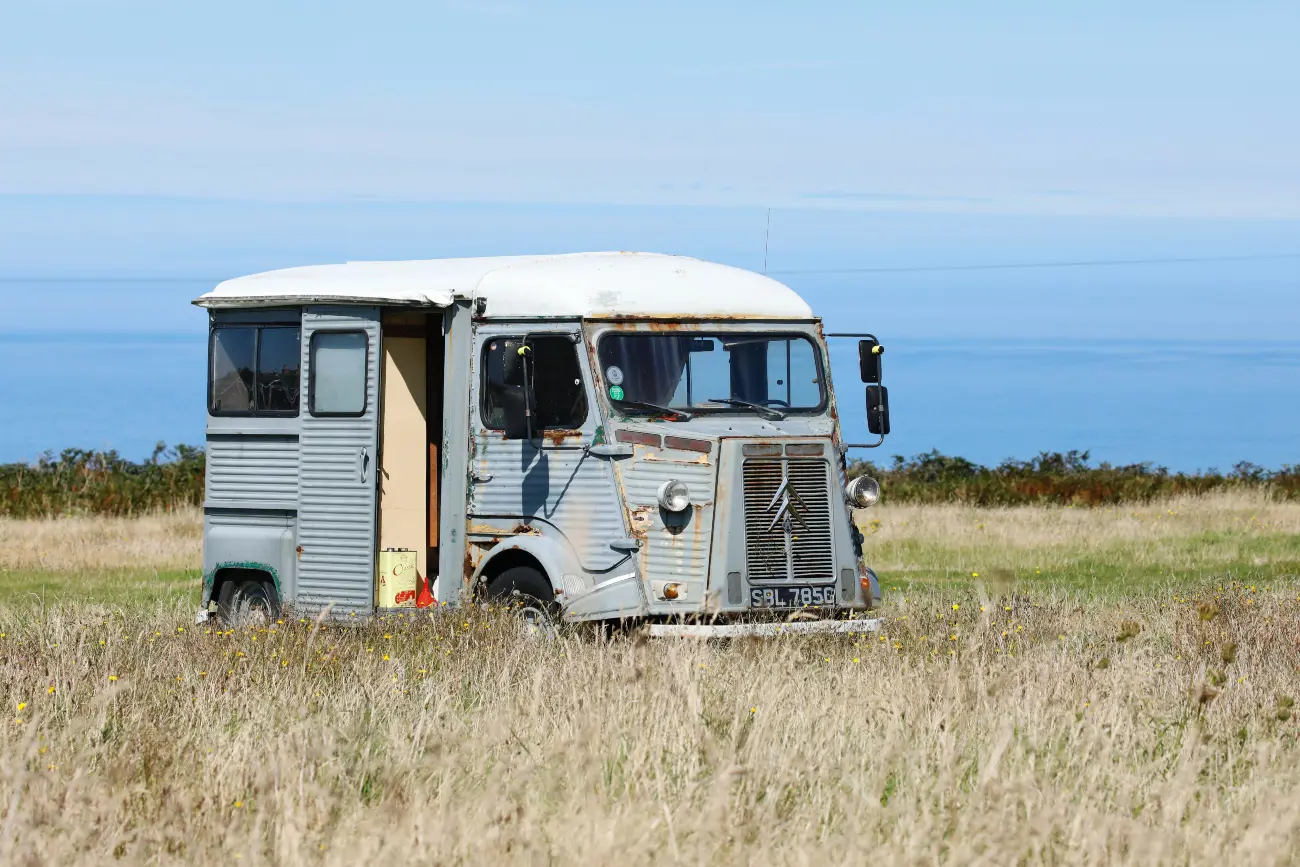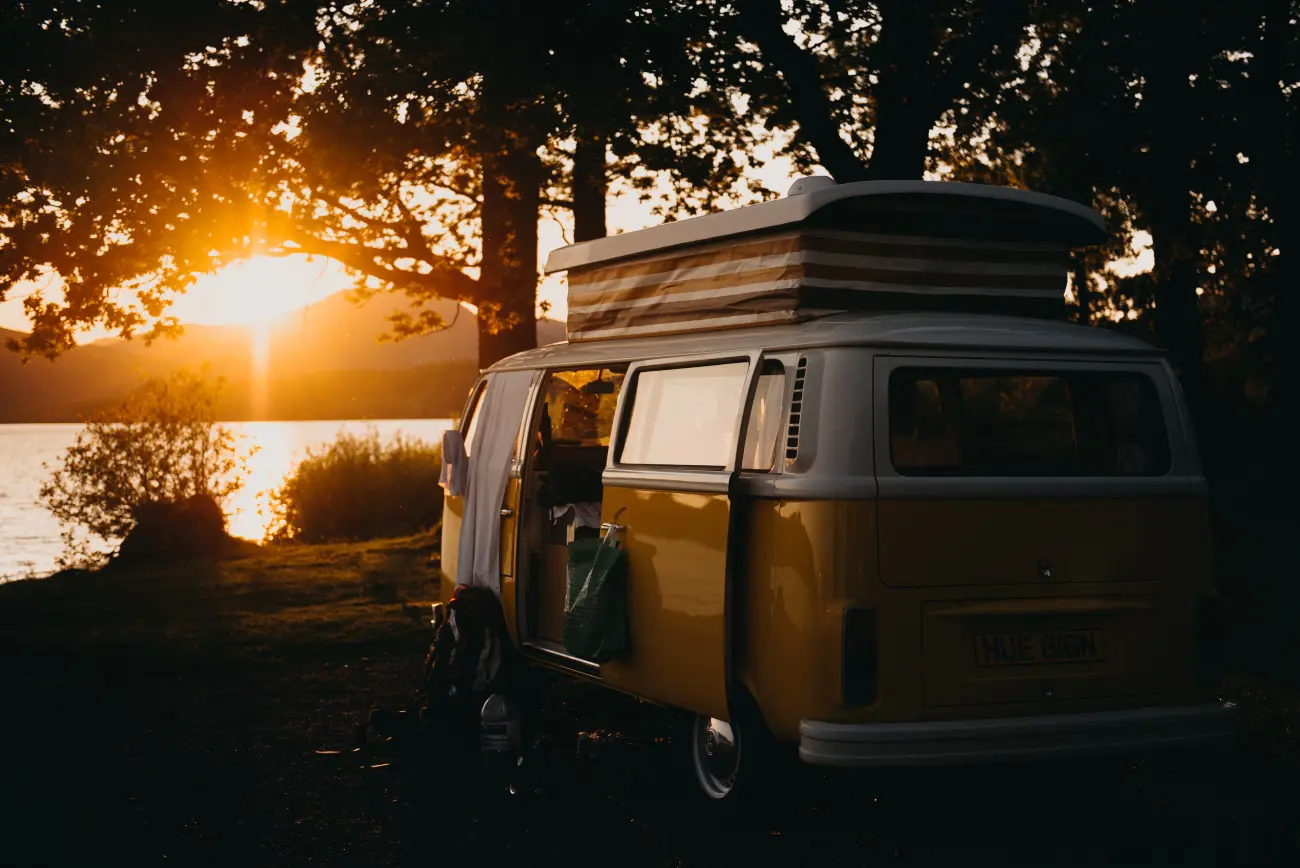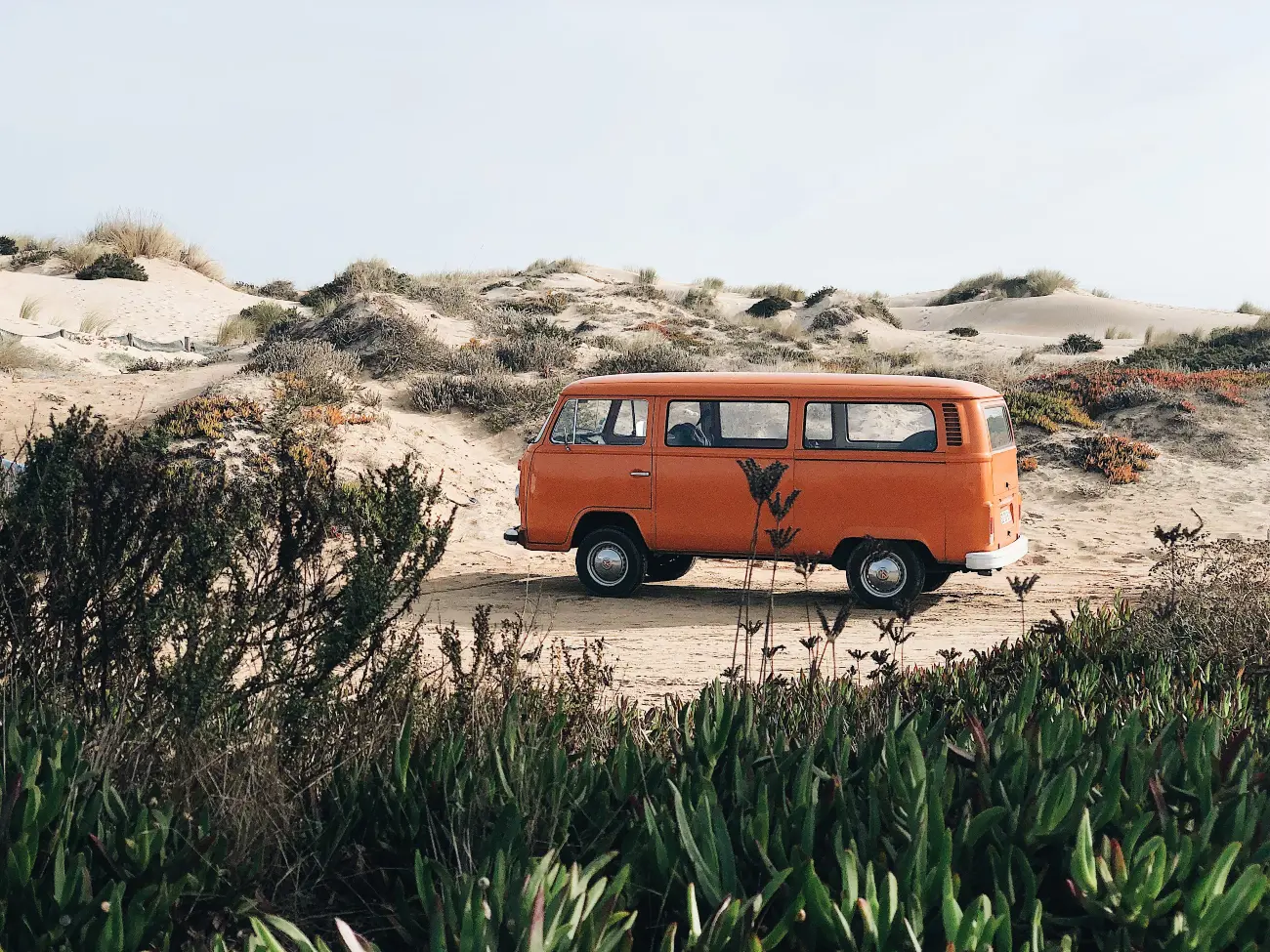How to plan a campervan holiday to Denmark
28 September 2021
Denmark is a popular holiday destination for campervan owners and it’s not hard to see why! Crammed within its modest 43,000 square kilometres (making Denmark just a little larger than the Netherlands and Switzerland) are a terrific range of activities and landscapes to explore – from its many beautifully preserved towns and cities to the wild beaches of both its North Sea and Baltic Sea coastlines.
It also regularly features in polls of the world’s happiest countries, making it a must-visit for any serious campervan explorer. Just make sure you have your campervan insurance in place to keep your happy adventure on track!
What to see
Denmark’s highlights include the vertiginous chalk cliffs of Møns Klint and the beautiful town of Skagen on the Jutland coast, whose light and landscape inspired a famous generation of Danish painters.
Then there are all the islands to visit – there are technically over 1,400 islands in the kingdom of Denmark, of which 443 have been named and 78 are inhabited. This compares well with Greece’s 227 islands – and makes Denmark a great destination for island hopping.
Beautiful and easily reachable islands include Bornholm, with its white sand beaches, and Funen, birthplace of Hans Christian Andersen. Many of these islands are accessible by car ferry, so you and your campervan could spend a very enjoyable fortnight simply pottering around Denmark’s island system.
You’re never far from the coastline in Denmark, either, which means that many of the country’s best camping spots are near to the sea and a bracing morning dip is very often an option. Its long coastline features a profusion of beautiful sandy beaches; inland, the landscape is a mix of rugged wild country and prosperous farmland, broken up by large conifer forests.

Camping in Denmark: good to know
The good news for campervan owners is that Denmark is a country well geared up for camping holidays – and that, unlike the cost of holidaying in Scandinavia more generally, camping in Denmark is affordable.
There are around 500 organised campsites across the country, of which the majority welcome campervans.
Fuel is typically around 20p/litre cheaper than here in Britain, although prices can vary, so it’s a good idea to fill up wherever the prices look reasonable. Aside from the campsites themselves, you can stock up on fresh water and offload your waste at Denmark’s numerous motorway rest areas.
Your diesel may be cheaper, but groceries tend to be more expensive in Denmark, and a canny traveller’s tip is to stock up in Germany before crossing over.
Lastly, be aware that Denmark now has four low emissions zones – the capital Copenhagen, plus the cities of Aarhus, Odense and Aalborg. These may well affect your campervan – for example, you’ll probably need a sticker displaying your vehicle’s emissions status, or face a fine. You can find full info about the various schemes – which differ from one city to the next – on the European Urban Access Regulations website.
While we’re on the subject of getting your paperwork in order before you go, do make sure that your campervan cover is up to date – and will cover your time spent abroad.
Denmark, happily, is an EU country and many campervan insurance policies, including our own here at Lancaster Insurance, will include a period of cover while travelling within the European Union.
Where to camp: official campsites
Denmark’s ‘official’ campsites are grouped into two categories – campsites that fall under the Danish Camping Board (Campingrådet or DCU), a rough equivalent to our own Camping and Caravanning Club; and the independent, or frie campsites.
You’ll be fine whichever route you go down. Broadly, the DCU sites will be a little more uniform in the way that they are run, and they are graded on a rating system from one to five stars, taking into account factors like security, maintenance, hygiene, and cooking and cleaning facilities.
You should look for sites with two stars or more, as these will have the facilities necessary to welcome campervans – such as facilities for emptying and refilling your water.
Note that admission to these sites requires a Camping Key Europe card, or campingpas – an ID card that you’ll leave at reception throughout your stay. As well as being required for entry to these sites, this campingpas is well worth having as it also brings discounts at campsites right across the Continent.
You can pick one up very easily at any Danish Camping Board campsite, for around 110 Danish kroner (DKK, equivalent to about £12.70) – or you can be organised and buy one in advance from The Caravan Club website for just £5.
When it comes to the independent sites, there’s a simple trade-off. On the one hand, they may not always offer the same standards of facilities, hygiene and security as their DCB counterparts – although, with all Danish campsites subject to approval by local authorities, standards will always be reasonable. On the other hand, they may offer just that little more unique character, and their own way of doing things.
By the way, language shouldn’t be a problem wherever you end up – English will be spoken at all of these facilities. Many campsites are also open all year round, although the Danish winter may be a different proposition to the summer!
Talking of off-season, another card that may be worth getting hold of is the CampingCard ACSI, which will set you back just €13 (around £11) and entitles you to off-season reductions at 60 campsites around the country (plus hundreds more around Europe).
If you’re not planning on spending long at a campsite, you may get a reduction if you arrive after 8pm and check out before 10am – it’s not a bad idea to call ahead and find out if your campsite offers this reduction.

Where to camp: other options
In fact, when it comes to campervanning around Denmark, you, your family and your campervan have several alternatives beyond the officially recognised campsites. For example, you can simply pull off the road into a layby (or rasteplads) and spend the night there (unless indicated otherwise on signage): you’re just not permitted to put up a tent or awning.
Similarly, many towns and tourist destinations around the coast have special parking areas where campers can park during the day – and may stay overnight there too, for a small charge. You can find out where these places are from a local tourist information bureau.
Lastly – and believe it or not – private gardens may also be an option for you. Yes, that famed hospitality means that many Danes have now opened their own gardens as free pitches for campers. You’ll be able to recognise these garden pitches by their universal logo: a white heart with two footprints, set inside a green circle. Don’t forget to call at the owner’s house and check that permission still applies!
Also be aware, with all these non-official options, that security may be less advanced than at the official campsites, and that you will be responsible for the safety of your campervan and contents. This is the right moment to remind you to ensure that your campervan insurance is both up to date and fully compliant with your stay abroad.

Three great Danish campsites where your campervan is welcome
Camp Møns Klint
If you like your campsite in dramatic surroundings, look no further than Camp Møns Klint, set atop some breathtaking chalk cliffs perched 120 metres above the Baltic Sea.
The Møns Klint cliffs are justly famous across Denmark, and the campsite certainly has an enviable location. What’s more, there’s plenty to keep you here – the woods and hills that surround the site are great for walking, horse riding, mountain biking, kayaking, paragliding and more. Møns Klint’s remoteness means it’s a great spot to enjoy the dark night sky, and there’s also plenty of wildlife.
Booking is only necessary from late June to late August; otherwise you can just turn up and park wherever you like.
Facilities include washing and drying facilities, an outdoor heated pool for the summer months, a mini golf course, playground, football pitch, tennis court and more. There’s also a small kiosk and pizza restaurant, and Wi-Fi access across the site.
Typical costs for two adults and one child with electric hook-up will be 442 DK (£51) in low season, and 497 DDK (£57) in peak season.
Like many of these Danish websites, the website comes in both Danish and English versions.
DCU-Camping Rørvig Strand
This one is a good choice if you like to mix a bit of culture into your campervanning escape. One of the many sites run by the Danish Camping Board, Camping Rørvig Strand is sited in the middle of a conifer forest in North Zealand, Denmark’s northernmost region which has recently been rechristened the Danish Riviera thanks to its increasing popularity with visitors.
One of the many great things about this site is that it’s right next to a beach, the eponymous Rørvig Strand, and has its own private route down to the seashore. That’s far from all there is to do here, though: you can take a ferry to Hundested, a busy fishing port with boats bringing in the daily catch, plus an art gallery, traditional boatyard, netmaker and blacksmith’s forge.
There are lots of things for families to enjoy here, too, including the Anneberg museum and the Nykøbing Sommerland amusement park. Rørvig itself, meanwhile, is an excellent spot for crab fishing. Right on site, meanwhile, are play facilities, a fitness room, shop, kitchen, barbecue areas and more.
Prices for a family of three would be from 304 DKK (£35) off-peak / 340 DKK (£39) peak season.
Remember that campervan insurance can cover your personal possessions and camping equipment, too. Ask the team at Lancaster for more details when you get a quote.
Randbøldal Camping
Did someone say Legoland? Randbøldal Camping has lots of things to recommend it but chief among them might just be its proximity to the world-famous Legoland theme park – just 15 minutes’ drive away.
There’s plenty to keep you within the site itself, though, including the magical woodland valley in which it shelters, not to mention the large freshwater lake with its 50-yard water slide.
Why not create some traditional Danish hygge of your own and curl up with a blanket in the back of your campevan here? Elsewhere, you can play table tennis, get airborne on the trampolines, and take a ride around the site in one of Randbøldal’s special ‘moon buggies’.
There’s a café and shop on-site, too, while the generous facilities list also includes washrooms, outdoor fireplaces and barbecue areas, picnic areas and outdoor furniture, a communal kitchen, washing and laundry services.
Peak-season prices here are 80 DKK (£9) for the pitch, plus a further 80 per adult per night, descending to 40 for the pitch and 65 (£7.50) per adult per night if you come in mid-season, or 15 (pitch) and 55 per adult per night in low season. On top of that you’ll need to add a further 40 DKK ‘tourist tax’ and 40 for your electrical hook-up.
Insure your campervan with Lancaster Insurance
Denmark is deservedly one of Europe’s top locations when it comes to campervan holidays. We hope we’ve inspired you to explore this magical kingdom in your campervan.
Campervan insurance through Lancaster can include free EU cover for up to 90 days while you explore the area. Want to stay longer? No problem! Up to 365 days can be covered for an additional charge.
Protect your personal possessions while you’re out on the road with cover for personal effects up to £6,000.
Contact us today to arrange the campervan insurance you’ll need for all the adventures ahead.
Policy benefits, features and discounts offered may very between insurance schemes or cover selected and are subject to underwriting criteria. Information contained within this article is accurate at the time of publishing but may be subject to change.
